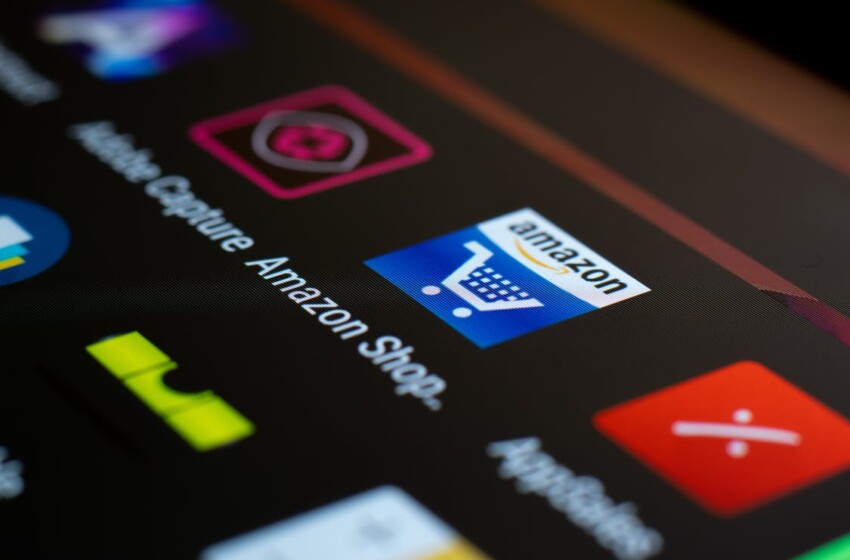 Intro
Intro
Welcome to sell on Amazon
The Amazon Advantage
- Third-party sales account for about 60% of physical product sales on Amazon. These are growing faster than Amazon’s own retail sales.
- More than 200,000 entrepreneurs worldwide made over $100,000 in sales in our shops in 2019.
Before you start selling
Choose your tariff
On the Individual selling plan, you pay €0.99 per item sold, while on the Professional selling plan, sellers pay €39 per month, regardless of how many items they sell. If you sell more than 40 items per month, the Professional selling plan makes sense. Whichever tariff you choose, you don’t have to worry about making the wrong choice, because you can switch tariffs at any time. Note that in both cases there are additional selling fees for the flat rates.
plans
Selling rate for individual providers
Selling plan Professional
- You sell fewer than 40 items per month
- You don’t need advanced sales tools or additional programs
- Not sure what you want to sell yet
- You sell more than 40 items per month
- They want access to APIs and more sales reports
- You want to sell using programs like Launchpad or Handmade
What you need to get started
- Business email address or Amazon customer account
- Debitable credit card (international cards are also accepted)
- Valid passport or ID card. Identity verification protects selling partners and customers
- Company registration details, including VAT number
How much does it cost to sell on Amazon?
- With the Professional selling plan, there is a flat fee of €39 per month, but no selling fee per item.
- With the single seller sales plan, a fee of €0.99 per item sold applies.
Meet Seller Central
What is Seller Central?
- Use the Inventory tab to keep track of your inventory and update your listings
- Download custom stats and reports and mark templates you use often
- Use customer analytics tools to monitor your seller performance
- Contact Selling Partner Services and create a case log ticket
- Keep track of your daily sales for all products you sell on Amazon
Compliance with sales tax requirements
Information on sales tax requirements
How to offer products
Offer the first product
The way sellers upload and list their products depends on the selling plan. Simply put, sellers using a Professional selling plan seller account have the option to bulk upload their products or manage inventory using third-party systems, while sellers using a Retail selling plan seller account record their product listings one at a time.
What you need to offer products
- SKU
- product title
- Product description and bullet points
- product images
- Relevant search terms
Successful offer = successful start
Problems with variants
Compliance with image requirements
product identifiers
The product detail page
On a product detail page, customers are viewing a product that is sold on Amazon. If you’ve shopped on Amazon before, then you’re probably familiar with the product detail page. This is where customers can find all the relevant information about a specific item.
When multiple sellers are listing the same product, Amazon combines data from all listings into one product detail page (so we can offer customers the best possible experience). You can work with other sellers and manufacturers to suggest product information for a product detail page and request a review of the detail page if you think the information is inaccurate.
As you build your product detail pages, think about what will best help customers find your products, get their questions answered, and make a purchasing decision. Deliver a superior customer experience by making your offers meaningful, accurate, and easy to understand.
One account for all of Europe
VAT tools and resources
translation services
How to ship products
Choosing the right shipping option
The advantages of Fulfillment by Amazon
Shipping of your products throughout Europe
If you sell with Fulfillment by Amazon in Europe, you can save up to 53% and increase your sales by up to 30%. In addition, you benefit from faster delivery by Amazon and the Prime logo.
This is how Fulfillment by Amazon works
Step 1
step 2
step 3
step 4
Send orders yourself
Shipping charges apply to all products sold in the Single Vendor plan. Therefore, it is important that you can continue to set profitable prices for items. With the Buy Shipping feature, you can get great deals on shipping labels, ship and confirm your orders, and track your shipments with Amazon’s trusted network of shipping partners.
Prime by Seller allows you to ship Prime branded products directly from your own warehouse. Prime customers can thus benefit from free express shipping. This not only increases your level of awareness, but also demonstrably increases customer trust, which can lead to higher sales figures.
You have sold your first product. What’s next?
Manage Amazon Business
Seller Performance Statistics (And Why They Matter)
- Order Defect Rate (a measure of a seller’s customer service standards): <1%
- Preshipment cancellation rate (initiated by seller prior to shipment): <2.5%
- Late shipment rate (orders shipped after expected date): < 4%
Opportunities for growth for your company
This is just the beginning
advertising
There are three different advertising options on Amazon, all accessible through Seller Central.
Promotions and Coupons
Expand worldwide
When it’s time to grow your business, you can use Global Selling with Amazon to list and sell your products on any of our online stores in North America, Europe and Asia.
The checklist for your growth
. Ready to follow their example? Just follow the manual:




 Intro
Intro
Leave a Reply